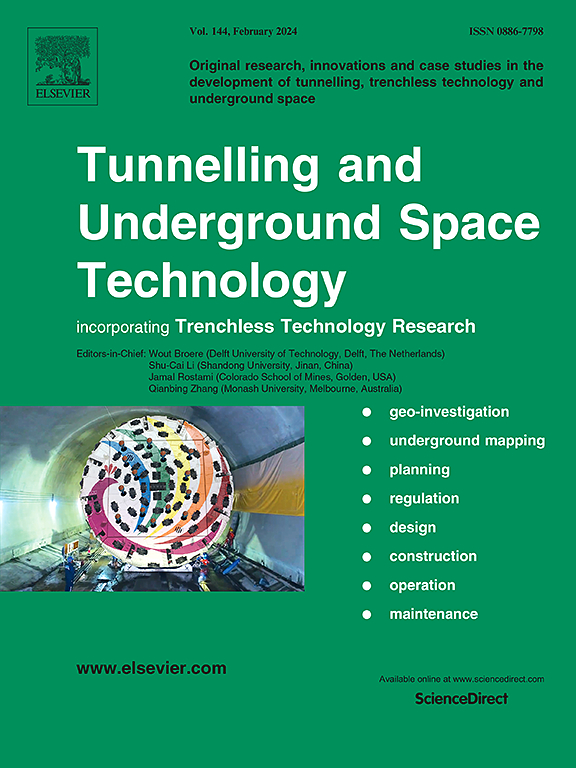Optimal intensity measures for fragility analysis of shallow circular subway tunnels subjected to Rayleigh waves
IF 6.7
1区 工程技术
Q1 CONSTRUCTION & BUILDING TECHNOLOGY
引用次数: 0
Abstract
Shallow subway tunnels in both the intermediate and far fields are significantly affected by Rayleigh surface waves, which typically induce substantial vertical seismic motion and exhibit high seismic destructiveness. However, current vulnerability assessments of underground tunnels primarily focus on body waves. This study aims to identify the optimal ground motion intensity measures (IMs) for evaluating the seismic fragility of shallow circular subway tunnels subjected to Rayleigh waves. A detailed dynamic analysis of soil-tunnel interaction is performed using the two-dimensional Finite Element Method, with particular emphasis on the influence of tunnel burial depth and site classification on the tunnel’s response to Rayleigh waves. The input of Rayleigh wave motion is modeled by transforming the motion into a series of equivalent forces, applied through viscoelastic boundaries. This study examines 15 widely used ground motion IMs, with diameter deformation ratio (DDR) serving as the damage measure (DM). Linear regression analysis is conducted to explore the relationship between IMs and DDR. The optimal IMs are evaluated based on criteria including efficiency, practicality, proficiency, and correlation. The results indicate that for sites classified as Class III and IV, the optimal IM is root mean square velocity (vrms), while for Class II sites, spectral mean velocity (SMV) is more suitable. Fragility curves for shallow-buried tunnels in Class II, III, and IV sites are presented. These curves demonstrate that tunnels are most vulnerable to damage in Class II sites, followed by Class IV, and least vulnerable in Class III sites. In Class II sites, shallower tunnel depths are associated with increased seismic damage, while deeper tunnels in Class III and IV sites experience greater seismic damage. The primary factor influencing seismic damage to tunnels is the vertical relative deformation of the surrounding soil layers.
求助全文
约1分钟内获得全文
求助全文
来源期刊

Tunnelling and Underground Space Technology
工程技术-工程:土木
CiteScore
11.90
自引率
18.80%
发文量
454
审稿时长
10.8 months
期刊介绍:
Tunnelling and Underground Space Technology is an international journal which publishes authoritative articles encompassing the development of innovative uses of underground space and the results of high quality research into improved, more cost-effective techniques for the planning, geo-investigation, design, construction, operation and maintenance of underground and earth-sheltered structures. The journal provides an effective vehicle for the improved worldwide exchange of information on developments in underground technology - and the experience gained from its use - and is strongly committed to publishing papers on the interdisciplinary aspects of creating, planning, and regulating underground space.
 求助内容:
求助内容: 应助结果提醒方式:
应助结果提醒方式:


